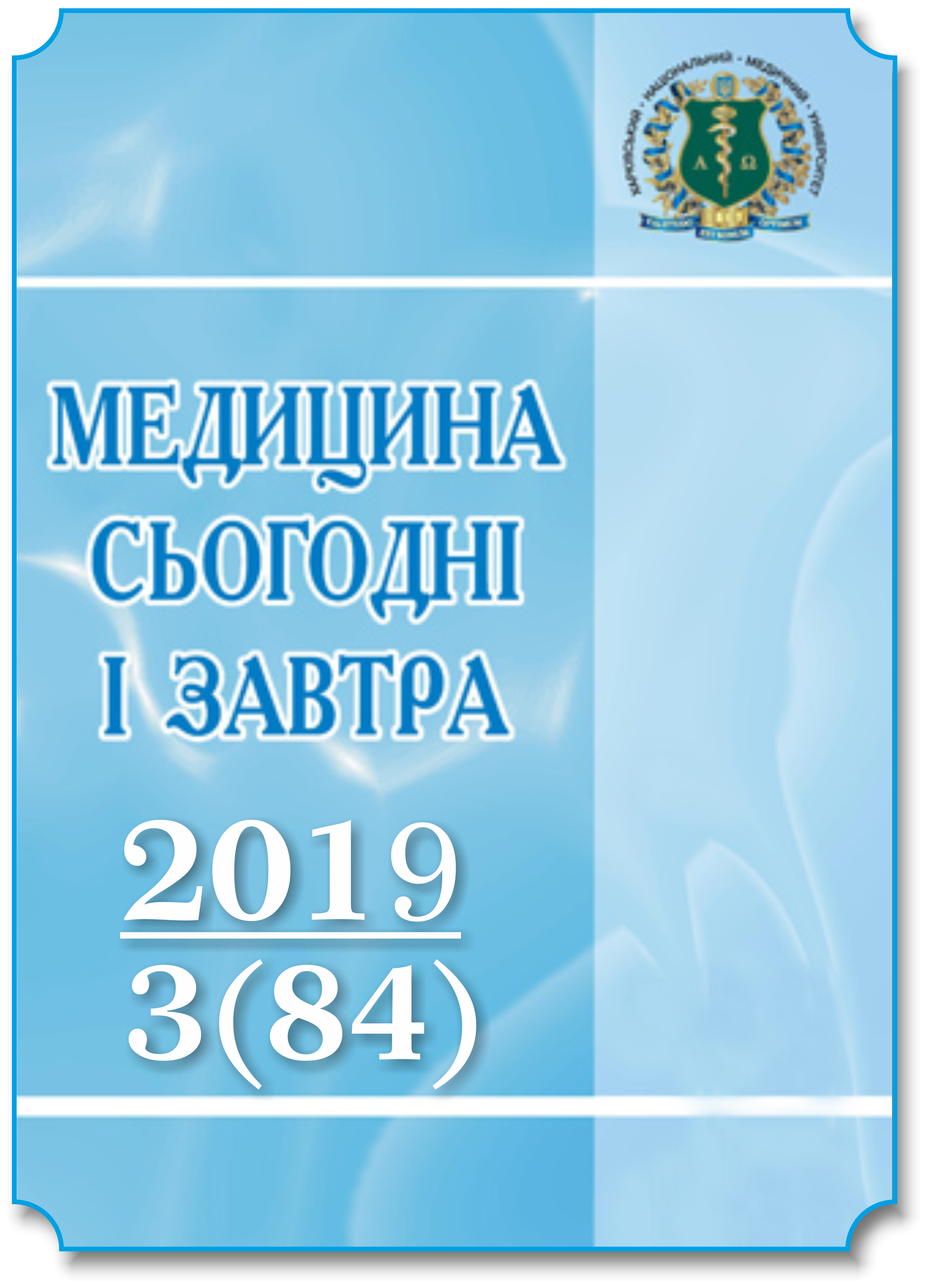Abstract
A comprehensive examination of 79 children of middle age (3,2±1,3) years old with perinatal hypoxic-ischemic damage to the central nervous system who were born prematurely was performed. The clinical features of impaired motor functions in premature infants who underwent perinatal hypoxic-ischemic brain damage complicated by intraventricular hemorrhages were studied. It was shown that cerebral palsy was diagnosed in 20,3 % of sick children, which was accompanied by severe motor disorders of levels IV–V according to the classification of motor functions GMFCS; 37,9 % have spastic diplegia with II–III level of motor disorders; 27,8 % have a hemiplegic form of cerebral palsy with motor disorders corresponding to level II of the GMFCS classification. Acquired posthemorrhagic hydrocephalus was diagnosed in 14,0 % of the examined children, while the vast majority of children who were operated on before 6 months of age did not have motor deficiency (level III according to the GMFCS classification); 1 child (9,1 %) was not operated on and had a V level of motor disorders according to GMFCS. It has been established that the most significant factors that form a severe motor prognosis are: gestational age of 27–30 weeks, peri-intraventricular hemorrhages of II–IV degrees, periventricular leukomalacia of III degree and signs of periventricular ischemia.
References
Kyrylova L.H., Lysytsia V.V. (2010). Vrodzheni vady rozvytku tsentralnoi nervovoi systemy – nahalna medyko-sotsialna problema derzhavnoho znachennia [Congenital malformations of the central nervous system are an urgent medical and social problem of national importance]. Ukrainskyi medychnyi chasopys – Ukrainian Medical Journal, № 6 (80), pp. 35–38 [in Ukrainian].
Znamenska T.K., Vorobiova O.V., Dubinina T.Yu. (2017). Stratehichni napriamky rekonstruktsii systemy okhorony zdorovia novonarodzhenykh ta ditei Ukrainy [Strategic directions of reconstruction of the health care system of newborns and children of Ukraine]. Neonatolohiia, khirurhiia ta perynatalna medytsyna – Neonatology, Surgery and Perinatal Medicine, № 4 (26), pp. 5–12 [in Ukrainian].
Yeargin-Allsopp M., Van Naarden Braun K., Doernberg N.S., Benedict R.E., Kirby R.S., Durkin M.S. (2008). Prevalence of cerebral palsy in 8-year-old children in three areas of the United States in 2002: a multisite collaboration. Pediatrics, № 121 (3), pp. 547–554.
Martyniuk V.Yu. (2012). Dytiachyi tserebralnyi paralich [Cerebral palsy]. Sotsialna pediatriia ta reabilitolohiia – Social Pediatrics and Rehabilitation, № 1 (2), pp. 18–23 [in Ukrainian].
Palchik A.B., Fedorova A.Ye., Poniatishin A.Ye. (2012). Nevrolohiia nedonoshennykh detei [Neurology of premature babies]. (3d ed.). Мoscow: MEDpress-inform, 352 p. [in Russian].
Pakula A.T., Van Naarden Braun K., Yeargin-Allsopp M. (2009). Cerebral palsy: classification and epidemiology. Phys. Med. Rehabil. Clin. N. Am., № 20 (3), pp. 425–452.
Bax M., Goldstein M., Rosenbaum P., Leviton A., Paneth N., Dan B. et al. (2005). Proposed definition and classification of cerebral palsy, April 2005. Developmental Medicine and Child Neurology, vol. 47 (issue 8), pp. 571–576, DOI 10.1017/s001216220500112x.
Kachmar O.O. (2008). Systema klasyfikatsii velykykh motornykh funktsii u ditei iz tserebralnymy paralichamy [Classification system of great motor functions in children with cerebral palsy]. Mizhnarodnyi nevrolohichnyi zhurnal – International Journal of Neurology, № 1 (17), pp. 90–93 [in Ukrainian].
Morris C., Bartlett D. (2004). Gross motor function classification system: impact and utility. Developmental Medicine and Child Neurology, vol. 46, pp. 60–65, DOI 10.1017/s0012162204000118.
Shevchenko L.A., Bobrova V.Y. (2017). Perinatalnyie motornyie sindromy i ikh terapevticheskaia korrektsiia: monohrafiia dlia vrachei neonatolohov, pediatrov, nevrolohov, semeinykh vrachei, vrachei-internov, studentov vysshchikh meditsinskikh uchebnykh zavedenii [Perinatal motor syndromes and their therapeutic correction: a monograph for neonatologists, pediatricians, neurologists, family doctors, interns, students of higher medical schools]. Zaporozhie, Kiev: Prosvita, 158 p. [in Russian].
Yashchenko Yu.B., Kobets V.M. (2011). Yakist zhyttia ditei, yaki narodylys z nyzkoiu i ekstremalno nyzkoiu masoiu tila, ta zakhody z orhanizatsii yii pokrashchennia [Quality of life of children born with low and extremely low body weight, and measures to improve it]. Sovremennaia pediatriia – Modern Pediatrics, № 3, pp. 15–18 [in Ukrainian].

